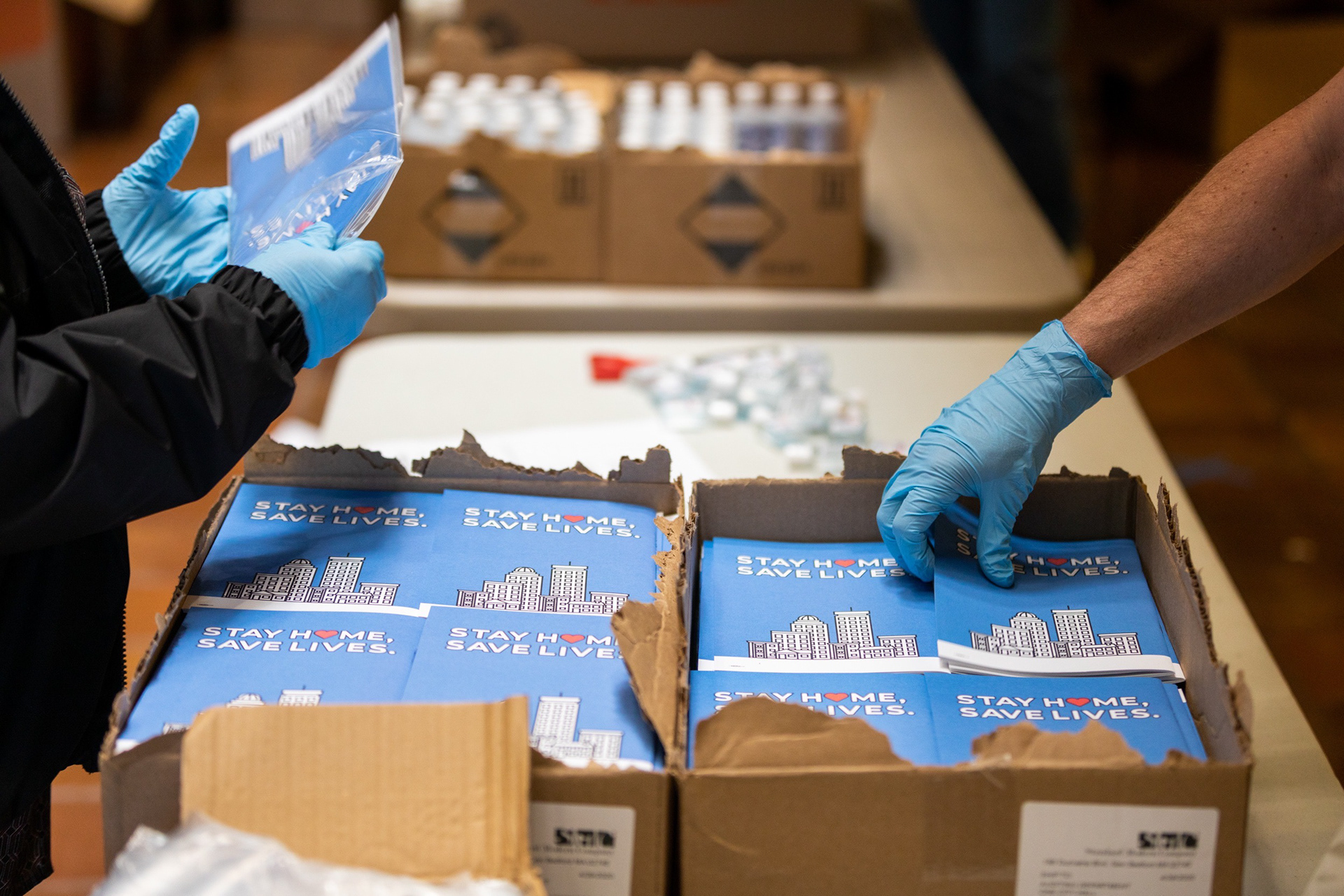When Sebastian Ellington Flying Eagle Ebarb joined the department of Art + Design at the Northeastern College of Arts, Media and Design in early 2022, it felt like a soft landing. As the lead designer for the City of Boston and founder of the pay-what-you-can design studio Nahi (meaning “we” in Apache), he was a full-time practitioner who had always loved teaching as an adjunct. Balancing his practice with more time with students aligned with his professional goals to make a difference, especially for Indigenous communities, through design.
 “I had a professor in grad school who told me ‘What good is teaching once you’ve retired?’ And I agree with that,” says Ebarb. “Students deserve your attention while you’re still practicing so they can benefit from your current knowledge. Northeastern gives me the space to be a practitioner and a professor.”
“I had a professor in grad school who told me ‘What good is teaching once you’ve retired?’ And I agree with that,” says Ebarb. “Students deserve your attention while you’re still practicing so they can benefit from your current knowledge. Northeastern gives me the space to be a practitioner and a professor.”
This semester, students in Ebarb’s Design II course are benefiting from his balance of practice and theory, working in groups alongside the City of Boston on public awareness projects highlighting emergency preparedness. One group is focusing on populations that don’t consistently spend time in Boston, like tourists and commuters, while others chose target audiences of kids 5-12 years old and pet parents who need guidance on how to care for animals during disasters to avoid overwhelming shelters.

To address these issues, Ebarb is helping students develop not only the design skills but the cultural competency to approach difficult conversations. Providing people with informational materials, slogans, and visuals to make their own case will always be more effective than dictating messaging, he says: “Thinking about a hurricane or a terrorist attack is scary, so getting people to activate themselves is a matter of making it personal. It’s a steady drum beat rather than an immediate change.”
These principles have been important for Ebarb in designing campaigns that can be difficult in other ways, such as political efforts to acknowledge and repair the damage Native American communities have experienced as a result of colonial history and policies.
Getting people to activate themselves is a matter of making it personal.
“I’m mixed race, so I’m having these conversations with my Native American family, but also with my Black and Irish and Italian families,” says Ebarb. And in those conversations, he says, a slogan won’t be enough. “You need to provide information to bring people along. What is the tangible information to get them on board? That’s where pamphlets, posters, and websites can bring people in.”
Ebarb appreciated the power of art for a cause from an early age, raised in Brooklyn by working artists and nonprofit professionals who met working together on a project to create the first video library for the Brooklyn Public Library system. His parents encouraged him to pursue his passions, which originally took the form of politics but eventually moved toward design during his time at Trinity College, where he learned about the field’s ability to effect change.
This sense of political power later solidified for him in Louisiana, where elders from his home tribe, the Choctaw-Apache Tribe of Ebarb, reside. “I was tasked with, as they put it, ‘speaking for my people’” he says. Ebarb says he has been endeavoring to learn more about ‘his people’ — in the most expansive sense possible — ever since.
“Growing up in Brooklyn rather than closer to my tribal lands in Louisiana, I have a physical disconnect from that heritage,” says Ebarb. “But design and technology have made that distance one I can learn across. I’ve grown up in the Urban Indigenous experience, and I come from a mixed tribe. This allows me to see how the visuals and the experience of a lot of different folks can come together.”

It’s a skill that serves Ebarb particularly well when helping Native American clients who may come from other tribes, many of whom specifically seek out the work of other Native American designers. “One of the things about being a Native American designer is there’s not thousands of us,” he jokes. “The handful of us in the US are all in the same Indigenous Designer Facebook group.”
The group is where many opportunities to work on projects related to Indigenous issues arise. “I’ll get approached by people from different tribal backgrounds because they can’t find a designer from their tribe. So it’s a great opportunity for me to bring my larger understanding of what it is to be Indigenous in the United States to tap into the stories of the people who need to help — in order to show who they are as a people.”
On November 12, Ebarb will give a talk about this personal journey through Native Design at the Type Drives Culture Conference from the Type Directors Club — Native North American Edition. The conference — this year titled Ezhishin (an Ojibwe word for “s/he leaves a mark”) — is led by Native designers and will facilitate conversations around the typographic needs of First Nation/Native American communities.

